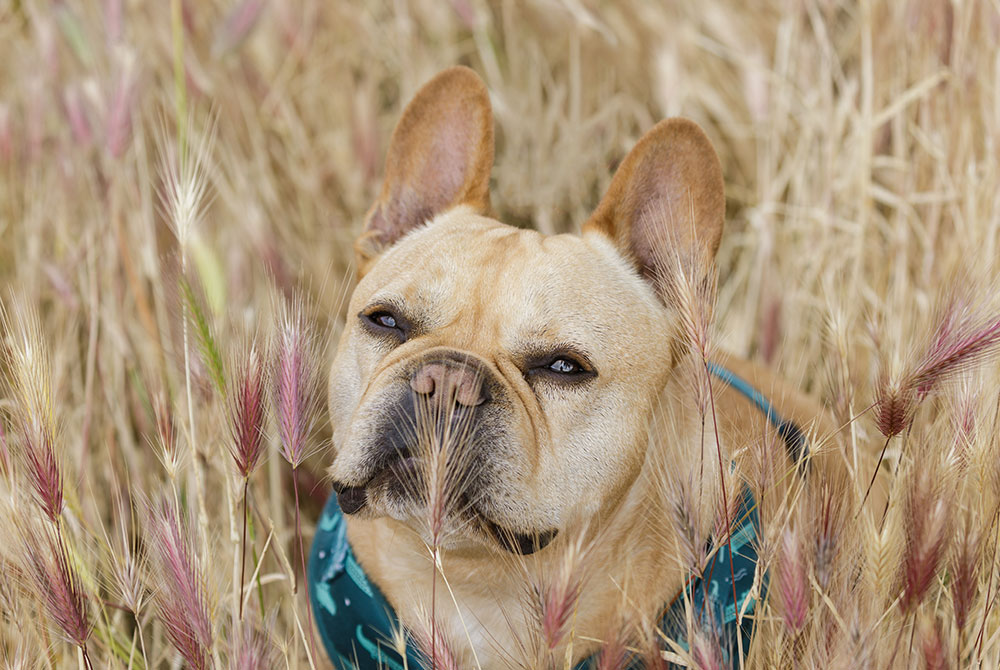Grass Awns: What They Are and Why They’re Dangerous for Pets
If you’ve ever taken your pet for a walk or let them roam in an open field, you’ve likely encountered grass awns—those seemingly harmless seed bristles from tall grasses. But while they may look like a natural part of the landscape, grass awns, including foxtails, pose a serious danger to dogs and cats.
At Mission Veterinary Clinic & Animal Emergency Hospital, we frequently treat pets suffering from grass awn injuries, which can lead to painful infections, abscesses, and even life-threatening complications. Understanding what grass awns are, where they are found, and how to protect your pet is essential, especially in areas like California, where these plants thrive.
What Are Grass Awns?
Grass awns, also known as foxtails or mean seeds, are barbed seed pods found on certain grasses, including wild barley and cheatgrass. These seeds are designed to burrow into the soil to take root, but unfortunately, they also burrow into pet fur, skin, ears, eyes, noses, and paws.
According to the Pet Poison Helpline, grass awns are particularly dangerous because:
- They have sharp, backward-facing barbs that prevent them from working their way out once embedded.
- They can migrate deep into the body, causing infections, abscesses, and even organ damage.
- They do not break down naturally without causing infection and inflammation, and must be removed by a veterinarian.
Where Are Grass Awns Found?
Grass awns are most common in dry, grassy areas and are prevalent in:
- Open fields, hiking trails, and parks
- Roadside areas and vacant lots
- Overgrown yards and backyards
They are particularly abundant in California during the late spring and summer months.
How Grass Awns Harm Pets
Common Areas Grass Awns Affect:
1. Ears
Grass awns catch in ear hair and then wiggle their way in- they can easily become lodged in a pet’s ear canal, leading to pain, head shaking, and infections.
Signs to Watch For:
- Intense head shaking or ear scratching
- Redness or swelling inside the ear
- Discharge or a foul odor
If your pet has an ear awn, do not attempt removal at home or clean the ear before a vet has had a look. Learn how to safely clean your pet’s ears from Cornell University’s Riney Canine Health Center.
2. Paws and Toes
Grass awns often get trapped between paw pads, where they burrow into the skin.
Signs to Watch For:
- Limping or favoring one paw
- Swelling or redness between toes
- Excessive licking or biting at the foot
3. Nose
Dogs that sniff the ground frequently may inhale a grass awn, which can migrate into their nasal passages or even their lungs.
Signs to Watch For:
- Persistent sneezing
- Nasal discharge (sometimes bloody)
- Labored breathing
4. Eyes
Grass awns can lodge in the eye or under the eyelids, leading to corneal ulcers or infections.
Signs to Watch For:
- Squinting or excessive blinking
- Eye redness or discharge
- Pawing at the eye
5. Skin and Fur
Long-haired pets are especially at risk of grass awns embedding into their coat and burrowing into the skin.
Signs to Watch For:
- Swollen lumps or abscesses
- Excessive licking at one spot
- Sudden pain when touched
If an embedded grass awn is suspected, prompt veterinary attention is necessary. Delayed treatment can lead to serious infections, abscess formation, and migration into deeper tissues.
Emergency Situations: When to Seek Veterinary Care
Immediate veterinary attention is needed if your pet:
- Develops a sudden, painful swelling
- Cannot stop shaking their head or scratching at their ear
- Has difficulty breathing or persistent sneezing
- Shows signs of severe eye irritation
For emergency care, contact Mission Veterinary Clinic & Animal Emergency Hospital at Mission Vet- Contact Us.
How to Protect Your Pet from Grass Awns
1. Avoid High-Risk Areas
- Stick to well-maintained trails and grassy areas that are regularly mowed.
- Avoid overgrown fields, vacant lots, and unkempt roadways during peak foxtail season.
2. Perform Daily Coat Checks
- Brush your pet daily, especially if they have a long coat.
- Focus on ears, paws, armpits, and under the tail where awns commonly attach.
3. Keep Your Yard Trimmed
- Remove foxtail-producing grasses from your property.
- Maintain a short lawn to reduce exposure.
4. Use Protective Gear
- Consider using dog boots to protect paw pads.
- Use a snood or protective hood to prevent foxtails from entering ears.
5. Regular Grooming
Routine grooming helps remove hidden awns before they cause harm. Learn more about regular pet grooming and its benefits from the ASPCA.

What to Do If You Find a Grass Awn on Your Pet
- If it’s on the surface of the fur, carefully remove it- with tweezers if needed.
- If it’s embedded in the skin, ear, or eye, do NOT attempt removal at home. This can push the awn deeper and worsen the injury.
- Schedule a veterinary visit immediately to have the awn safely removed.
For tips on examining and treating your pet’s ears, check out Washington State University’s Veterinary Guide.
Keeping Your Pet Safe from Grass Awns
Grass awns pose a serious but preventable risk to pets, particularly in California’s dry climate. By staying vigilant, grooming regularly, and seeking prompt veterinary care, you can protect your pet from painful injuries and infections.
At Mission Veterinary Clinic & Animal Emergency Hospital, we offer:
- Comprehensive exams and safe awn removal
- Emergency care for severe cases
- Preventive care to keep your pet safe year-round
Schedule a wellness exam today: Book an Appointment
Learn more about our AAHA-accredited care: Our Veterinary Standards










Leave A Comment